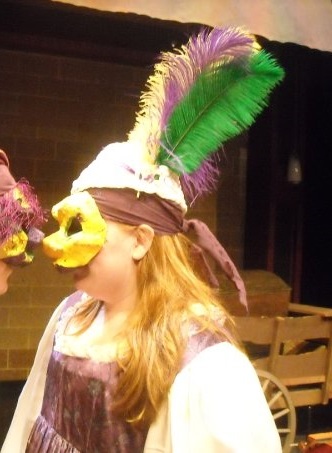Oral History: Thanksgiving Traditions
Saturday, November 15th, 2014(Part Two of a Three-Part Holiday blog series) by Melissa Clifford, 2014 Kent State MLIS Museum Studies graduate student
*Please note that all ![]() icons are actually links to sound files so that you can hear our Oral History interviewees tell their own stories!*
icons are actually links to sound files so that you can hear our Oral History interviewees tell their own stories!*
I’ve been working on oral history digitization for over a year now. In that time, I’ve been fascinated by the stories that are contained on our small plastic cassettes and I’ve been eager to share them with others. I grew up in an age where computers were fairly common in homes and grocery stores were sure to carry the things you needed for a new recipe. Through listening to people tell their stories of growing up in Oberlin, I have learned that it wasn’t too long ago that it was common to raise your own livestock and grow your own vegetables. Along this same investigation, I’ve been looking into how holidays have changed. I’ve learned that it was probably quicker to prepare a Thanksgiving dinner in the past than it now is. You didn’t have to thaw your turkey for days, and you probably didn’t have to go to the grocery store to pick up vegetables!
My first job after college was at a research lab, and I’ll never forget that our “holiday bonus” every year was getting a frozen turkey to take home for Thanksgiving. These turkeys were literally as hard as a rock and took at least a week to thaw out before they were useful. Because I’ve never had to raise my own turkey, I wasn’t too aware of just how difficult wrangling these large birds could be. Luckily for me, Oberlin’s Oral History Project has left us with a great story of the perils of farming poultry:
We had chicken and then when Mama started raising turkeys of course we had turkey.
BT: Tell me about the turkeys that you raised.
MC: It’s an odd thing about turkeys. They look strong but they are very delicate. Mama had to give each one of them a pill to keep them from having worms. She would hold their heads and slightly press in on their neck so they had to open their mouth to breathe and then she’d put this pill down their neck. They had to be brought in when it was raining. We would go out and drive them in the brooder house. She had to keep the temperature at a certain degree all the time and you couldn’t have chickens when you had turkeys because the chickens would give the turkeys diseases and they would die. They didn’t kill the chickens but they did the turkeys. That is how we finally paid off the mortgage on the farm, with turkeys. They were very demanding though—you had to be home all the time.
–Magdalene Cox (as interviewed by Betty Thomas), November 24, 1982
Magdalene makes me very glad that I never had to raise my own turkeys! I do remember that my Grandma was always sure to make at least one thing that each of her grandchildren liked. For example, my cousin really liked a particular biscuit and I preferred jellied cranberry sauce from a can. After we all ate our feast, we then would sit around sharing stories but it wouldn’t take too long before the adults started becoming sleepy. My mom always blamed it on the tryptophan in the meat. As she began talking about tryptophan, my thoughts often drifted like the ideas that Marion Dudley’s cousin had:
We would have family gatherings. I remember my cousin after Thanksgiving day, we were all together at that home and after dinner she came into the living room, looked around and said, “I wish I didn’t have such a sleepy bunch of relatives.” Because here was this uncle there asleep and another uncle someplace else. My father always took a nap after dinner, 15 minutes. Then he was ready to go back to work. The rest of the family, more or less of that.
Since my grandparents passed away, my Thanksgiving traditions have changed quite a bit. I’ve gotten married so I have in-laws to please, my parents have moved, and my uncle and cousins have also moved. While my new Thanksgiving plans aren’t the same as what I used to experience, it is still a very special time. I think this last oral history quote I am leaving you with is the best way to describe this holiday. Millie reminds us to look past the struggle of cooking a 20-lb turkey or making a roaster full of stuffing. She best describes the reason why Thanksgiving is such a popular holiday and will continue to be a favorite for years to come.
Our Thanksgivings are something like that. They’re smaller celebrations but it’s intimate family and it’s always the same Thanksgiving dinner with the turkey, dressing, mashed potatoes, squash, lima beans, things that certain people say, “Don’t forget.” Also rolls and pumpkin pie. To me Thanksgiving is almost the ideal holiday. It’s a beautiful time of the year. It’s the time of harvest or beyond harvest. There is lots of good fellowship and good food without the expense and the hassle of buying and wrapping lots of gifts. This is just a wonderful family time that is very relaxed and comfortable to be together.
One last thing I’d like to leave you with is a more recent story of Oberlin’s past at Thanksgiving time. It was just twelve years ago that the quiet streets of Oberlin were terrorized by a ferocious turkey. Please enjoy the following news articles that include such headlines as “Foul-tempered turkey not meant for Thanksgiving feast” and “Large turkey tormenting town residents”. Happy Thanksgiving!







